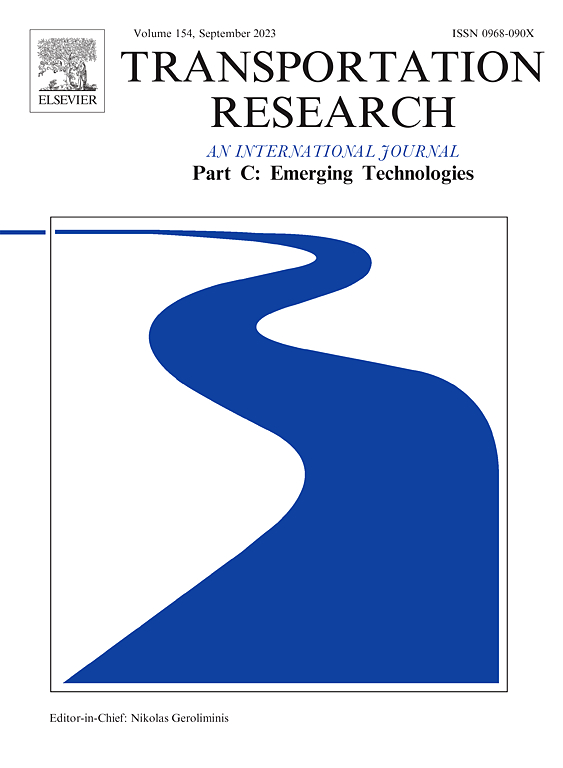Delay predictive analytics for airport capacity management
IF 7.6
1区 工程技术
Q1 TRANSPORTATION SCIENCE & TECHNOLOGY
Transportation Research Part C-Emerging Technologies
Pub Date : 2025-02-01
DOI:10.1016/j.trc.2024.104947
引用次数: 0
Abstract
Local delay predictions are crucial for optimizing airport capacity management, enhancing overall resilience, efficiency, and effectiveness of airport operations. This paper delves into the development and comparison of state-of-the-art predictive analytics techniques—spanning rule-based simulations, queuing models, and data-driven approaches—and demonstrates how they can empower informed decision-making toward mitigating the impact of potential delays across the whole spectrum of capacity management initiatives—from long-term strategic capacity planning to near real-time air traffic flow management. Using real-world data for four major airports in Southeast Asia, we comprehensively assess the performance of different methods and highlight the improved predictive capabilities achievable through data-driven methods and the incorporation of sophisticated features. Results show that (i) embedding queuing model features into machine learning models effectively captures congestion dynamics and nonlinear patterns, resulting in an improvement in predictive accuracy; (ii) incorporating advanced day-of features – lightning strikes, wind conditions, and propagated delays from prior hours – further enhances prediction accuracy, yielding gains ranging from 15% to 30%, contingent on the specific airport; (iii) in cases where limited information is available (years to months in advance of operations), conventional simulation and queuing models emerge as robust alternatives. Ultimately, we conceptualize and validate a delay prediction framework for airport capacity management, characterizing the different planning phases based on their specific delay prediction requirements and identifying appropriate methods accordingly. This framework offers practical guidance to airport authorities, enabling them to effectively leverage delay predictions into their airport capacity management practices.
求助全文
约1分钟内获得全文
求助全文
来源期刊
CiteScore
15.80
自引率
12.00%
发文量
332
审稿时长
64 days
期刊介绍:
Transportation Research: Part C (TR_C) is dedicated to showcasing high-quality, scholarly research that delves into the development, applications, and implications of transportation systems and emerging technologies. Our focus lies not solely on individual technologies, but rather on their broader implications for the planning, design, operation, control, maintenance, and rehabilitation of transportation systems, services, and components. In essence, the intellectual core of the journal revolves around the transportation aspect rather than the technology itself. We actively encourage the integration of quantitative methods from diverse fields such as operations research, control systems, complex networks, computer science, and artificial intelligence. Join us in exploring the intersection of transportation systems and emerging technologies to drive innovation and progress in the field.

 求助内容:
求助内容: 应助结果提醒方式:
应助结果提醒方式:


